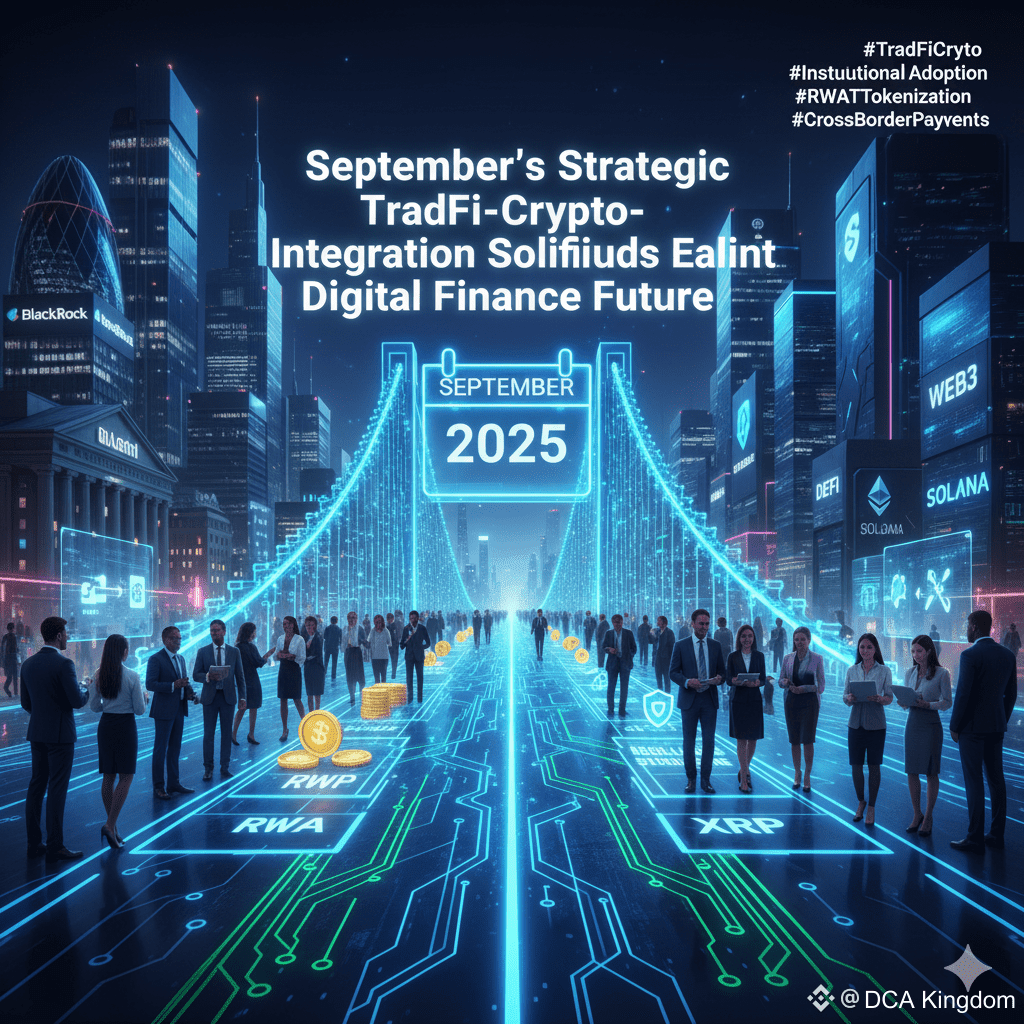The Symbiotic Evolution: Major TradFi-Crypto Collaborations in September
September witnessed a significant acceleration in the convergence between Traditional Finance (TradFi) behemoths and the burgeoning cryptocurrency ecosystem, underscoring a deepening symbiotic relationship that is rapidly redefining the contours of the global financial landscape. These strategic alliances, extending beyond mere custodial arrangements, focused intensely on infrastructure integration, tokenization of real-world assets (RWA), and enhanced cross-border liquidity mechanisms. This shift signifies that major institutions are no longer merely observing the crypto space; they are actively integrating its technological efficiencies into their core operational models, thereby validating the structural maturity of blockchain technology.
A key theme dominating September’s collaboration landscape was the definitive move toward Tokenization of Assets. Several major asset managers, often in partnership with established blockchain infrastructure providers like Fireblocks or Securitize, unveiled pilot programs or full-scale launches designed to tokenize private equity funds, real estate holdings, and corporate bonds. This collaboration aims to leverage blockchain’s attributes—namely fractional ownership, instantaneous settlement, and enhanced transparency—to democratize access to historically illiquid asset classes. For example, a prominent global bank was reported to have partnered with a Layer-1 protocol to issue a tokenized tranche of commercial paper, effectively testing the deployment of real-world assets onto a permissioned institutional blockchain. This integration is crucial, as it streamlines back-office operations, significantly reduces counterparty risk, and lowers the operational costs currently plaguing traditional asset servicing.
Beyond RWA tokenization, the imperative for cross-border payment efficiency drove notable partnerships. Month-long data highlighted several regional banks and money transfer giants partnering with crypto-native payment rails, such as those leveraging XRP or established stablecoin networks. The goal here is explicitly transactional: to bypass the slow, multi-intermediary structure of legacy systems like SWIFT. By adopting blockchain-based solutions, these institutions can achieve near-instantaneous settlement, offering substantial competitive advantages in the high-volume remittance and corporate treasury management sectors. The educational aspect here is profound; it demonstrates to the broader corporate world that blockchain's primary utility is often not speculative, but rather a superior operational tool for global value transfer.
Furthermore, institutional infrastructure adoption reached new milestones. September saw major custody banks announce deeper integrations with decentralized finance (DeFi) protocols, specifically within the realm of institutional lending and borrowing. These arrangements allow banks to offer their institutional clients regulated access to yield-generating opportunities within DeFi, but within tightly controlled, permissioned environments that meet stringent regulatory compliance standards. This represents the necessary bridge between the transparency and capital efficiency of DeFi and the risk mitigation requirements of TradFi. The development of institutional-grade custody solutions for a wider array of altcoins—beyond just Bitcoin and Ethereum—further cemented the institutional acceptance of the multi-chain future.

Finally, the regulatory landscape provided a powerful tailwind to these collaborations. The global clarification surrounding stablecoin rules and the gradual approval of spot Exchange-Traded Funds (ETFs) in major jurisdictions provided the legal certainty necessary for boards and compliance officers to sign off on large-scale crypto integration projects. Institutions are now primarily seeking partners who can navigate this regulatory environment, demanding technology providers offer robust compliance tools, KYC/AML features, and verifiable proof of reserves. The September partnerships thus reflect a market where collaboration is contingent not just on technological capability, but on an impeccable regulatory track record. These strategic moves validate the notion that future financial dominance will not be achieved by either TradFi or Crypto operating in isolation, but through their intelligent and highly compliant fusion.
#TradFiCrypto #InstitutionalAdoption #RWATokenization #CrossBorderPayments